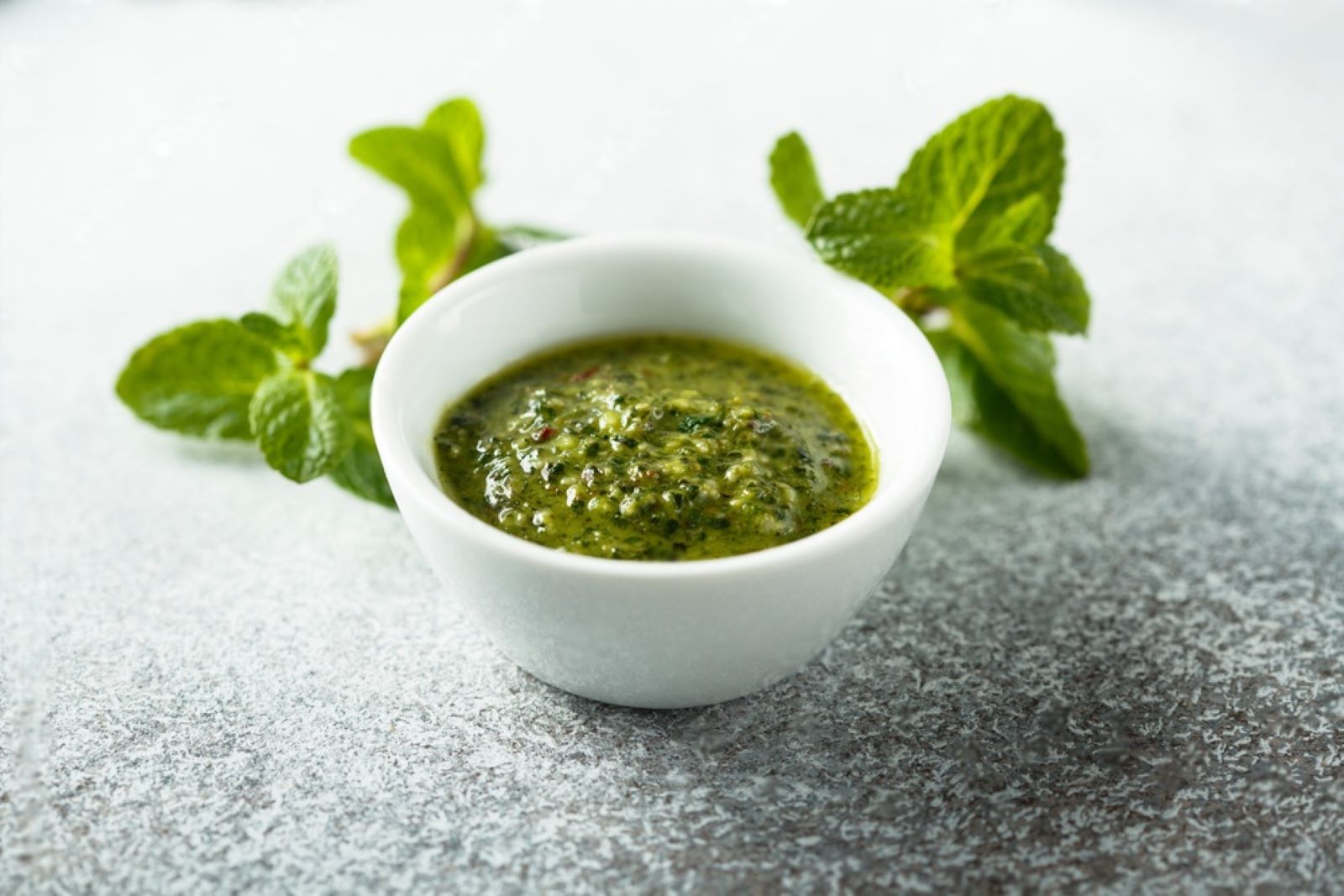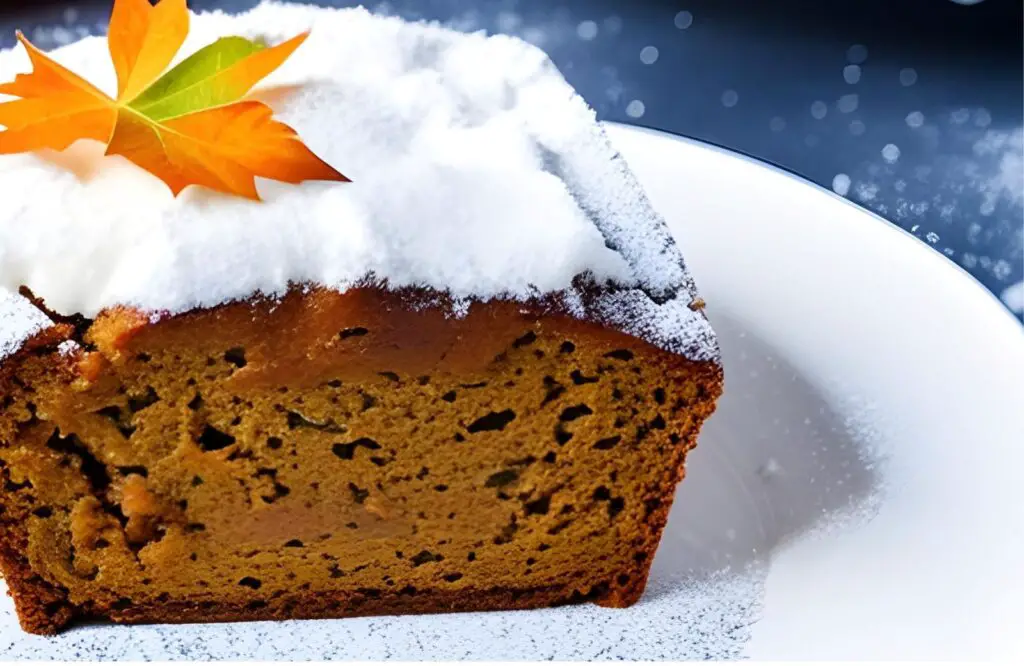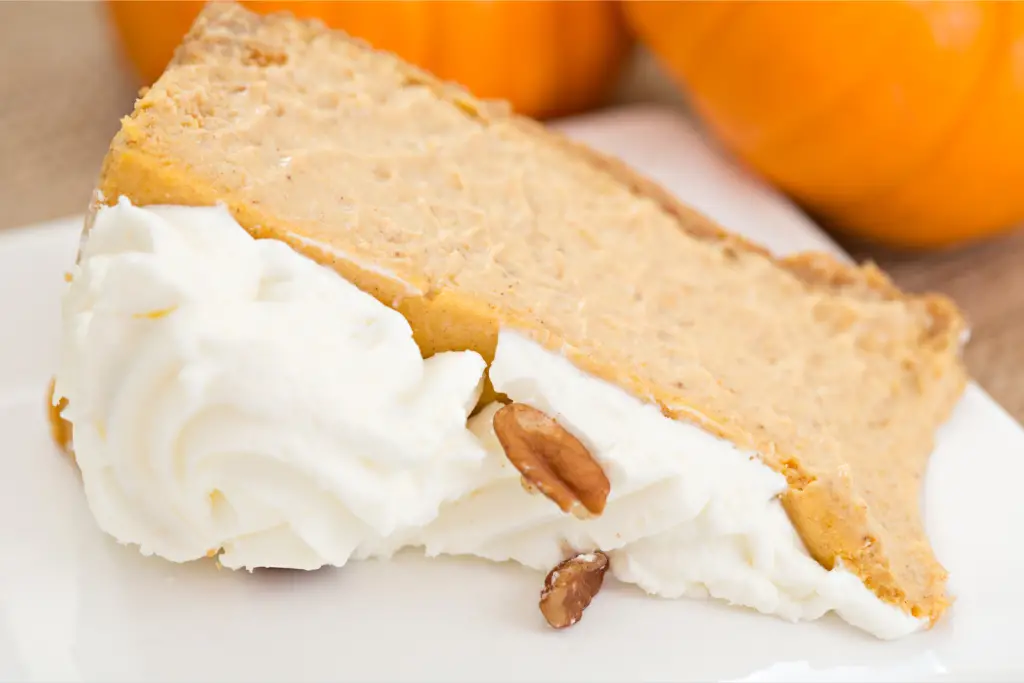
Mint soup is a refreshing and flavorful dish that is perfect for warm weather or as a light appetizer. Made with fresh mint leaves, vegetables, and aromatic spices, it’s a popular choice for those looking for a vibrant and healthy option. If you find yourself with a surplus of mint soup or simply want to enjoy it at a later date, freezing is a great option to preserve its taste and quality. By following a few simple steps, you can successfully freeze mint soup and have it readily available whenever you crave a bowl of its delightful flavors. In this article, we will provide a step-by-step guide on how to freeze mint soup effectively.
Here’s a guide on how to freeze mint soup:
Step 1: Prepare the mint soup
To freeze mint soup successfully, it’s important to start with a well-prepared and flavorful batch. Follow these steps to prepare the mint soup:
- Gather the ingredients: Check your recipe and gather all the necessary ingredients. The main component, of course, is fresh mint leaves, which give the soup its distinct flavor. Additionally, you may need vegetables such as onions, garlic, carrots, or potatoes, as well as spices and seasonings like salt, pepper, and herbs to enhance the taste.
- Clean the ingredients: Thoroughly wash the mint leaves and any other vegetables you will be using in the soup. This step ensures that the ingredients are free from dirt, pesticides, or any other contaminants.
- Chop and prepare the ingredients: Chop the vegetables into small, uniform pieces to ensure even cooking. For mint leaves, remove the stems and roughly chop them. This will help release their aromatic oils and infuse the soup with their refreshing flavor.
- Cook the soup: Heat a pot or saucepan over medium heat and add a small amount of oil or butter. Sauté the chopped onions and garlic until they become translucent and fragrant. Then, add the remaining vegetables and continue cooking for a few minutes until they start to soften. Next, add the mint leaves, spices, and seasonings according to your recipe. Stir everything together and let the flavors meld by simmering the soup for a specific amount of time, usually around 20-30 minutes.
- Taste and adjust the seasoning: Before freezing the mint soup, taste it and adjust the seasoning if needed. Add more salt, pepper, or herbs to balance the flavors and make it just right for your palate.
- Allow the soup to cool: After the cooking process, remove the pot from the heat and let the mint soup cool down to room temperature. This step is crucial before freezing, as it prevents condensation from forming inside the containers and maintains the soup’s quality during the freezing process.
Can I freeze mint soup with dairy ingredients?
Freezing mint soup with dairy ingredients is possible, but it can alter the texture and consistency of the dairy components. Dairy products like cream or milk may separate or become grainy after freezing and thawing. To mitigate this, you can try using stabilizers like cornstarch or tapioca starch when preparing the soup, or consider adding the dairy ingredients after thawing and reheating the soup to ensure a smoother texture. It’s recommended to test a small batch before freezing a large quantity to assess the quality and texture after thawing.
Step 2: Allow the soup to cool
After cooking the mint soup, it is essential to let it cool completely at room temperature before proceeding with the freezing process. This step is crucial for several reasons:
- Prevents condensation: When hot or warm soup is placed directly into containers for freezing, it releases steam, which can create condensation inside the containers. This moisture can lead to the formation of ice crystals, causing freezer burn and negatively impacting the texture and taste of the soup. Allowing the soup to cool eliminates excess steam and reduces the risk of condensation during freezing.
- Maintains flavor and quality: Rapid cooling of hot food can sometimes result in a loss of flavor and quality. Allowing the mint soup to cool gradually at room temperature helps preserve the flavors developed during the cooking process. It allows the soup to settle and develop its full taste profile before freezing, ensuring that the flavors are retained when it is thawed and reheated later.
- Ensures food safety: Placing hot soup directly into the freezer can raise the temperature of the freezer, potentially affecting the quality and safety of other frozen items. Cooling the soup before freezing helps maintain the optimal temperature in the freezer, ensuring that other frozen foods remain properly frozen and safe to consume.
To cool the mint soup effectively, follow these guidelines:
- Remove the pot or cooking vessel from the heat source.
- Allow the soup to sit uncovered at room temperature.
- Stir the soup occasionally to facilitate even cooling and prevent a skin from forming on the surface.
- Avoid placing hot soup in the refrigerator for rapid cooling, as this can raise the temperature inside the fridge and affect other perishable items.
Step 3: Portion the soup
Dividing the mint soup into individual portions or meal-sized servings before freezing is a practical step that offers several benefits. Here’s why portioning is important:
- Convenient thawing and reheating: Portioning the mint soup allows you to thaw and reheat only the amount you need at a given time. Instead of having to defrost the entire batch, you can take out individual portions as needed. This saves time and energy, especially if you’re looking for a quick and hassle-free meal.
- Reduces food waste: Portioning the soup helps minimize food waste. By freezing the mint soup in smaller portions, you have better control over the quantity you thaw and consume. This way, you can avoid defrosting more soup than you can finish, preventing unnecessary leftovers that may go to waste.
- Preserves flavor and texture: When you freeze and thaw soup repeatedly, it can affect the overall quality, taste, and texture. Portioning the mint soup allows you to freeze it in smaller quantities, reducing the need for repeated freezing and thawing. This helps maintain the soup’s freshness, flavors, and desired consistency when it’s reheated.
To portion the mint soup effectively:
- Use freezer-safe containers or bags: Choose containers or freezer bags that are designed for freezing food. Make sure they are airtight and leak-proof to prevent freezer burn and maintain the quality of the soup.
- Determine portion sizes: Consider how much soup you typically consume in one sitting. Portion the mint soup into individual servings or meal-sized portions accordingly. It’s helpful to label the containers with the portion sizes if you prefer uniform servings.
- Fill the containers: Ladle or pour the cooled mint soup into the containers, leaving some headspace to allow for expansion during freezing. It’s best to fill the containers to about 3/4 full to accommodate any expansion.
- Seal the containers: Ensure that the containers are tightly sealed to prevent air from entering and freezer odors from affecting the soup. If using freezer bags, press out excess air before sealing.
- Label the containers: Use a marker or label to indicate the contents and date of freezing on each container. This will help you keep track of the mint soup and ensure you use the oldest portions first.
Step 4: Use airtight containers or freezer bags
When freezing mint soup, it’s crucial to store it in airtight containers or freezer bags to maintain its quality and prevent freezer burn. Here’s why using airtight containers or freezer bags is important:
- Maintains freshness: Airtight containers or freezer bags create a barrier that prevents air and moisture from entering the soup. This helps maintain the freshness, flavors, and texture of the mint soup while it’s in the freezer. By sealing the containers tightly, you minimize the risk of the soup being exposed to freezer odors, which could alter its taste.
- Prevents freezer burn: Freezer burn occurs when food is exposed to air in the freezer, causing moisture to evaporate from the food’s surface. This results in dry, discolored patches and can negatively impact the taste and texture of the soup. By using airtight containers or freezer bags, you create a protective layer that reduces the chances of freezer burn, keeping the mint soup in optimal condition.
- Avoids cross-contamination: Storing mint soup in airtight containers or freezer bags helps prevent cross-contamination with other foods in the freezer. This is especially important if you have raw or uncooked foods nearby that may release odors or potentially contaminate the soup. Airtight containers or bags keep the mint soup isolated and maintain its integrity.
- Allows for expansion: Liquids, including soup, expand when frozen due to the formation of ice crystals. It’s crucial to leave some headspace in the containers or bags to allow for expansion without causing the container to burst or crack. Leaving about an inch of space at the top of the container or bag is generally sufficient.
When using airtight containers:
- Fill the containers with the mint soup, leaving some headspace.
- Secure the lids tightly to create an airtight seal.
- If using containers with snap-on lids, make sure they are properly closed and sealed.
When using freezer bags:
- Fill the bags with the mint soup, leaving some headspace for expansion.
- Gently press out excess air from the bag before sealing it tightly. Zip-top freezer bags are convenient for this purpose.
- Remember to label the containers or bags with the contents and date of freezing. This will help you keep track of the mint soup and ensure you use the oldest portions first when thawing and consuming.
Can I freeze mint soup in a glass jar?
Yes, you can freeze mint soup in a glass jar, but it’s important to follow certain guidelines. Use freezer-safe glass jars specifically designed for freezing, which are made of tempered glass and have wide openings to accommodate expansion. Leave enough headspace in the jar to allow for the expansion of the soup during freezing. Additionally, ensure the soup is completely cooled before transferring it to the jar to prevent thermal shock and potential breakage.
Step 5: Label and date the containers
Labeling and dating the containers of frozen mint soup is a crucial step in freezer organization. It helps you keep track of the contents, dates of freezing, and ensures you use the oldest portions first. Here’s why labeling and dating are important:
- Avoids confusion: By labeling each container with the contents, you can easily identify the mint soup without having to open or guess its contents. This is particularly helpful if you have multiple types of soups or other frozen foods stored together. Clear labeling minimizes confusion and saves time when you’re searching for a specific item.
- Tracks freshness: When you freeze mint soup, it’s important to consume it within a reasonable time frame for optimal taste and quality. By dating the containers, you have a reference point to gauge the freshness of the soup. This allows you to prioritize and use the oldest portions first, reducing the chances of the soup becoming forgotten or going past its best quality.
- Prevents food waste: Labeling and dating your containers of frozen mint soup helps prevent unnecessary food waste. By knowing the date of freezing, you can plan your meals accordingly and ensure that you consume the soup within a suitable time frame. This helps avoid scenarios where the soup remains in the freezer for too long and ends up being discarded.
To effectively label and date your containers of mint soup:
- Use a waterproof marker or labels: Choose a marker or labels that won’t smudge or fade when in contact with moisture or during the freezing process. Waterproof markers or freezer-safe labels are ideal for this purpose.
- Clearly write the contents: Clearly indicate that the container contains mint soup. You can also mention any specific variations, such as if it’s a specific flavor or if it contains any additional ingredients.
- Include the date of freezing: Write the date on which you froze the mint soup. This can be the exact date or the month and year, depending on your preference. Make sure the date is visible and easily readable.
- Attach the label: Stick the label directly onto the container or freezer bag, ensuring it is secure and won’t peel off during storage. If using a marker, write the information directly on the container, avoiding areas that may come into contact with moisture or condensation.
Step 6: Remove excess air
When using freezer bags to store mint soup, it is important to remove excess air from the bags before sealing them. This step helps prevent freezer burn and maintains the quality of the soup during freezing. Here’s why removing excess air is important:
- Prevents freezer burn: Freezer burn occurs when food is exposed to air inside the freezer. The moisture in the food evaporates, causing dry spots and affecting the texture and taste. By removing excess air from the freezer bags, you create a more compact and airtight package, reducing the chances of freezer burn on the mint soup.
- Maintains flavor and texture: Air can contribute to the degradation of the mint soup’s flavor and texture. By removing excess air, you create a tighter seal around the soup, minimizing the risk of oxidation and preserving the soup’s quality during freezing. This helps maintain the flavors and textures of the soup, resulting in a more enjoyable eating experience after thawing and reheating.
To remove excess air from freezer bags effectively:
- Fill the freezer bag: Transfer the cooled mint soup into a freezer bag, leaving some headspace for expansion during freezing. It’s recommended to fill the bag up to about three-quarters full, allowing enough room for the soup to expand without causing the bag to burst.
- Gently press out excess air: Starting from the bottom of the bag, slowly and gently press out the air while sealing the bag. Work your way up towards the opening, being careful not to spill the soup. This helps create a more compact package and minimizes the presence of air pockets.
- Zip or seal the bag securely: Once you have removed as much air as possible, seal the freezer bag tightly. Ensure that the seal is secure and airtight to prevent any air from re-entering the bag during storage.
- Double-bag if necessary: If you are concerned about air leakage or want an extra layer of protection, consider placing the filled and sealed freezer bag into another freezer bag and repeating the process of removing excess air and sealing. This provides an additional barrier against air and reduces the risk of freezer burn.
Remember to label the freezer bags with the contents and date of freezing for easy identification and organization.
Step 7: Place in the freezer
Once you have prepared and sealed the containers of mint soup, it’s time to carefully place them in the freezer for storage. The way you position the containers is important for maintaining the quality of the soup and ensuring efficient airflow. Here’s why proper placement in the freezer matters:
- Efficient airflow: Good airflow is essential for maintaining a consistent temperature throughout the freezer. When you position the containers in a way that allows for airflow, it helps ensure that the mint soup freezes evenly and remains at a stable temperature. This promotes optimal preservation and reduces the risk of temperature fluctuations that can impact the quality of the soup.
- Prevents crushing or damage: Placing the containers in a way that prevents them from being crushed or damaged is important to maintain their integrity. Ensure that there is enough space between containers to avoid any potential pressure that could lead to breakage or leaks. Placing them upright, if possible, can further protect the containers and prevent accidental spills.
- Easy access and organization: Properly arranging the containers in the freezer makes it easier to locate and access specific portions of mint soup when needed. Consider grouping similar items together or organizing them based on the date of freezing, so you can easily identify and retrieve the oldest portions first. This helps ensure that you use the mint soup in a timely manner and minimize the chances of it being forgotten or overlooked.
To place the containers of mint soup in the freezer effectively:
- Clear space: Create enough space in the freezer to accommodate the containers without crowding. Remove any items that may obstruct the placement or cause pressure on the containers.
- Position for airflow: Try to place the containers in a way that allows for efficient airflow in the freezer. Leave gaps between containers and avoid stacking them tightly to promote proper air circulation.
- Stable and upright: If using containers that are prone to leakage, ensure they are properly sealed and positioned upright to prevent spills. This also helps maintain the integrity of the containers and prevents accidental damage.
- Organize and label: If you have multiple containers of mint soup or other frozen items, consider organizing them by grouping similar items together or arranging them based on the date of freezing. Labeling the containers with the contents and date of freezing can further assist in easy identification.
Step 8: Store for up to three months
When it comes to storing mint soup in the freezer, it’s recommended to consume it within a timeframe of up to three months to maintain its quality. While the soup may still be safe to eat after three months, the flavors and textures may start to deteriorate. Here’s why it’s best to consume the soup within this period:
- Flavor preservation: Mint soup, like many other foods, can experience flavor degradation over time when stored in the freezer. The prolonged freezing process can cause subtle changes in taste and aroma, gradually diminishing the freshness and vibrancy of the mint flavors. By consuming the soup within three months, you can enjoy it at its best, with the flavors still relatively intact.
- Texture maintenance: The texture of mint soup can also be affected by prolonged freezing. Extended freezing may lead to slight changes in the soup’s texture, resulting in a loss of the desired consistency and mouthfeel. By consuming the soup within three months, you increase the chances of retaining the desired texture and ensuring a more enjoyable culinary experience.
- Optimal quality assurance: Storing mint soup for up to three months ensures that you are consuming it when it is still in its prime condition. The soup is less likely to suffer from significant quality deterioration within this timeframe, allowing you to enjoy it at its best.
To make the most of the three-month storage period, it’s important to follow proper freezing and storage practices, such as using airtight containers or freezer bags, removing excess air, and labeling the containers with the date of freezing. These practices help maintain the quality of the soup during its time in the freezer.
Step 9: Thaw and reheat
When you’re ready to enjoy the frozen mint soup, it’s essential to properly thaw and reheat it to ensure safe and delicious consumption. Here’s a step-by-step guide on how to thaw and reheat your mint soup:
- Thawing in the refrigerator: Start by removing the desired portion of frozen mint soup from the freezer. Place the sealed container or freezer bag in the refrigerator and let it thaw overnight. Thawing in the refrigerator allows for a slow and controlled thawing process, minimizing the risk of bacterial growth and maintaining the soup’s quality.
- Alternative thawing methods: If you need to thaw the soup quickly, you can use alternative methods such as thawing in cold water or using the defrost setting on your microwave. When using the cold water method, place the sealed container or freezer bag in a bowl of cold water, ensuring it remains airtight. Change the water every 30 minutes until the soup is thawed. If using the microwave, follow the manufacturer’s instructions for the defrost setting, making sure to monitor the soup closely to avoid overheating or cooking.
- Checking for full thawing: Once the mint soup has thawed, check that it is fully thawed throughout. Gently press on the container or bag to ensure there are no icy or partially frozen areas remaining. This step is important as partially frozen soup may lead to uneven reheating.
- Reheating on the stovetop: Pour the thawed mint soup into a saucepan and heat it over medium heat. Stir occasionally to promote even heating and prevent the soup from sticking to the bottom of the pan. Heat the soup until it reaches your desired serving temperature, ensuring it’s hot throughout. Avoid boiling the soup as excessive heat can impact the flavors and textures.
- Reheating in the microwave: If using the microwave, transfer the thawed mint soup to a microwave-safe container. Heat the soup in short intervals, stirring in between to distribute the heat evenly. Check the temperature frequently to prevent overheating or scalding. Once the soup reaches your desired serving temperature, it is ready to be enjoyed.
- Stirring and garnishing: After reheating, give the mint soup a gentle stir to ensure any separated ingredients are well incorporated. You can also garnish the soup with fresh herbs, a drizzle of cream, or any additional toppings of your choice to enhance its flavor and presentation.
Other related questions
Can I refreeze previously thawed mint soup?
It is generally not recommended to refreeze previously thawed mint soup. Each time the soup goes through the thawing and refreezing process, its quality can degrade, resulting in changes in taste, texture, and potentially compromising its safety. Additionally, repeated temperature fluctuations can increase the risk of bacterial growth. To minimize waste, it’s best to thaw and consume only the amount of mint soup you intend to use in one sitting, or divide it into smaller portions before freezing.
How do I know if my frozen mint soup has gone bad?
There are a few signs to look out for to determine if your frozen mint soup has gone bad. Firstly, check for any unusual odors. If the soup has a foul or off-putting smell, it is likely spoiled. Secondly, examine the appearance and texture. If there are significant changes such as discoloration, separation of ingredients, or a grainy texture, it’s a sign of spoilage. Lastly, taste a small portion of the thawed soup. If it tastes off, sour, or has an unpleasant flavor, it’s best to discard it to avoid any potential foodborne illness. When in doubt, it’s safer to err on the side of caution and not consume the soup.
Can I use frozen mint soup with the fresh ones?
Yes, you can use frozen mint soup alongside fresh ones. However, keep in mind that the texture and consistency of the frozen soup may differ slightly from the fresh version due to the freezing and thawing process. It’s a good idea to thaw the frozen soup and bring it to room temperature before combining it with fresh mint soup. Mixing them together can provide a balance of flavors and textures, enhancing the overall taste of the dish.
Will the texture of the mint soup change after freezing?
Yes, the texture of mint soup can undergo changes after freezing. Freezing and thawing can cause certain ingredients to become softer or lose their original crispness. Vegetables in the soup may become slightly mushy, while the texture of proteins, such as meat or tofu, can also be affected, potentially becoming more tender. Additionally, dairy-based soups may experience some separation or slight graininess in texture after freezing and thawing.
Can I freeze mint soup made with vegetable or chicken stock?
Yes, you can freeze mint soup made with vegetable or chicken stock. Both types of stock freeze well and can retain their flavors when used in mint soup. It’s important to ensure the soup is properly cooled before freezing to maintain its quality. When thawed and reheated, the soup should still have a delicious taste, although some minor texture changes may occur, particularly with ingredients like vegetables or meats.








